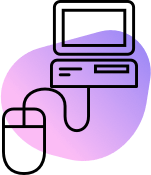With customer experience as today’s business benchmark, delivering top-notch customer service is crucial for any business.
According to Gartner, up to two-thirds of companies compete on customer experience, making the experience more important than product and price. One of the surest ways to deliver consistent quality service is to develop standard operating procedures (SOPs) for customer service teams.
What are SOPs?
Standard operating procedures (SOPs) are detailed guidelines to assist an employee in performing specific tasks smoothly. Their main objective is to ensure uniform and quality service. By using a step-by-step guide, SOPs provide employees with information they need to effectively perform a task without confusion or ambiguity.
While some minor errors are inevitable in any workplace, standard operating procedures are a great way to minimize them, creating a culture of quality control and dependability.
SOPs help:
- Document detailed internal processes
- Describe the best actions to be taken in a scenario
- Define a specified timeline for each action
- Outlines the expected results of a task
SOPs are targeted to achieve maximum efficiency and quality output, while reducing miscommunication and confusion about a company’s quality standards.
Let us take a look at seven key benefits of creating standard operating procedures in customer service processes.
Start your day
with great
quality
content
1. Ensures quality support
The experience that customers have with a company, including what they hear from their friends and family, determines the perception they have of the company. This is why it is critical to deliver top-notch customer service consistently.
An ideal SOP uses identifiable KPIs and metrics to assure quality. By setting a non-negotiable standard for the product/service that your business offers, SOPs for customer service processes help maintain the quality of service consistently.
For example, standard operating procedures can have instructions for call representatives to not put a customer on hold for more than 3 minutes or to increase the net promoter score by 10% for the next quarter. Using the analytics collected after each call cycle, supervisors can analyze the metrics and give feedback to support agents to improve accordingly.
2. Prevents knowledge loss
For any business, one of the biggest challenges is the loss of knowledge due to employee exit.
With every employee’s exit, unrecorded knowledge can lead to information gaps across your team. When crucial knowledge is missing, different versions of the truth emerge. As a result, team members receive inconsistent information that affects their performance.
In addition, when information is scattered, accessing relevant information at the right time becomes a big challenge. Employees spend valuable time trying to find the information instead of focusing on solving service-related issues.
By organizing SOPs in one place, knowledge loss can be prevented with employee exit. Having all facts and processes collated in one standard format minimizes the risk of transmitting false information through word of mouth or hearsay.
Standard operating procedures can ensure process efficiency as well as ready access to essential information any time.
3. Reduces Average Handle Time (AHT)
Average handle time (AHT) is a customer service metric used to measure the average amount of time that it takes for a support agent to handle a customer’s query, from the time of contact to the time of resolution. It is typically measured in minutes and is used to evaluate the efficiency and productivity of customer service operations.
Knowledge management for customer service is becoming an increasingly essential focal point for effective operational efficiency for organizations across industries. SOPs are a great way to store organizational knowledge as they help retain detailed step-by-step instructions for employees.
SOPs for customer service processes are especially useful in call centers as they help reduce the average handle time (AHT). This parameter determines the time taken to resolve a customer’s query effectively.
By using standard operating procedures to create guided workflows with interactive decision trees, the agents are empowered with the next best action at their fingertips. This helps reduce the time an agent takes to solve a customer problem effectively, reducing the AHT.
In a call center, the goal is to reduce the average handle time to as low as possible while still ensuring high-quality customer service. Including standard response templates in SOPs can save an agent’s time in solving common customer issues. This allows agents to spend more time on critical and complex tasks.
Additionally, SOPs in call centers will also ensure that your support team follows your business’s communication guidelines, tone, and overall brand identity.
4. Minimizes error while maximizing productivity
SOPs work as a ready reckoner for minimizing the chances of committing mistakes at your call center.
While mistakes are inevitable, doubts and confusion can affect an agent’s confidence and impact his/her performance. Adopting standard operating procedures in customer service processes is a great way to ensure that customer service representatives can cross-check for solutions in case of doubts or confusion. This reduces the time and energy spent shuffling around to get the relevant information.
SOPs are also very helpful in decision-making and strategic planning. In the case of bigger organizations, responsibilities often get blurred and might even overlap. Clearly-defined SOPs allow you to structure your team’s scope of work systematically to ensure that work is distributed equally across employees without duplication of efforts.
In addition, clear SOPs reduces the risk of miscommunication and misinterpretation of information to facilitate smooth operational efficiency. In effect, you can maintain uniform service and business value irrespective of how many customers you serve.
5. Simplifies customer support training
SOPs are a great way of training employees faster and more effectively. They provide an overview of the company’s operational preferences and standards.
New employees do not have to solely rely on memory retention of information briefed during the onboarding process. Instead, new employees can conveniently refer to the step-by-step guide in the form of standard operating procedures that have every detail for the best steps in any situation.
This reduces the likelihood of making mistakes, enhancing the quality of customer service overall.
6. Improves employee performance
At any job, employees have certain work targets to achieve regularly. These are KPIs that employees have to meet for their performance to be reviewed.
However, if there is no definitive framework for expectations and targets, supervisors and employees have no qualitative and quantitative standard to measure performance. This makes the employee review process an ambiguous and complicated one.
By having SOPs, agents have a clear understanding of the metrics and goals that are set for them. This way, there is a transparent and just method of reviewing any employee’s performance. Consequently, top performers can be rewarded while training can be provided to low-performers.
7. Ensures brand consistency
In an organization, multiple employees mean multiple work styles. While this is only natural, extreme variation in communication techniques and work systems would translate as inconsistent experience across contact channels to customers. Such inconsistencies could affect the quality of service that customers receive.
For example, a customer can get two different solutions to the same problem on the phone and on email, making them confused and frustrated.
To avoid such problems, having a ready source as a reference point would ensure a standardized response for a particular problem. SOPs can help you set up a knowledge management system to ensure the delivery of consistent communication and service.
In addition, as standard operating procedures are well-thought-out guidelines, minute details like brand voice and tone are also highlighted, ensuring that customers get a unified brand voice across touchpoints.
8. Boosts agent autonomy
Asking for help in situations of doubt and confusion is normal in any workplace. It happens with both new and existing employees.
While colleagues readily help their coworkers with the necessary information and assistance, it isn’t without a cost. Research says that for every distraction, the human brain takes up to 23 minutes to fully get back to focus mode!
This reality is especially alarming in a fast-paced ecosystem like a contact center, as such interruptions could impact your support team’s overall productivity and slow down turnaround time. In effect, the quality of customer service also gets affected, leaving customers dissatisfied.
However, with SOPs in place, your agents have ready access to the information they need at all times. This reduces their dependence on colleagues in case of any doubts about processes and policies. This way, your agents become efficient problem solvers providing support that delights your customers
Summing up
Creating SOPs can be a long and intensive process. However, the effort is critical to set your organization up for success in the long run.
Companies create SOPs to help employees provide consistent quality service, irrespective of how many customers they have to serve. They also help standardize routine activities such as onboarding processes or project management for employees to execute, thus boosting operational efficiency.
SOPs in customer service also help eliminate any guesswork in support processes and empower your representatives with the right information to handle difficult situations and solve complex issues confidently.

















